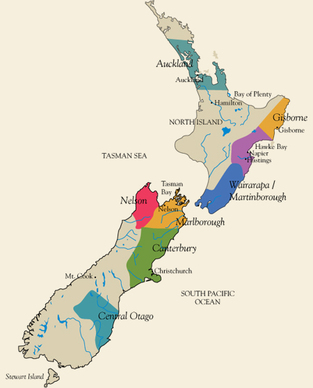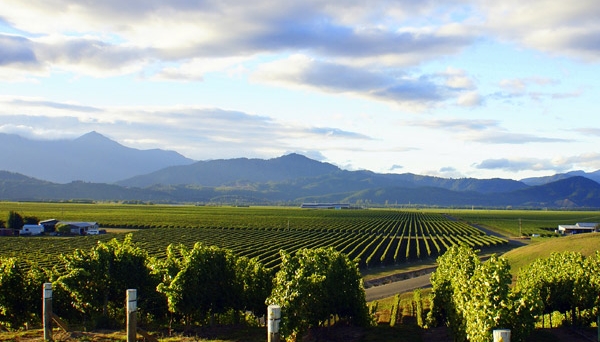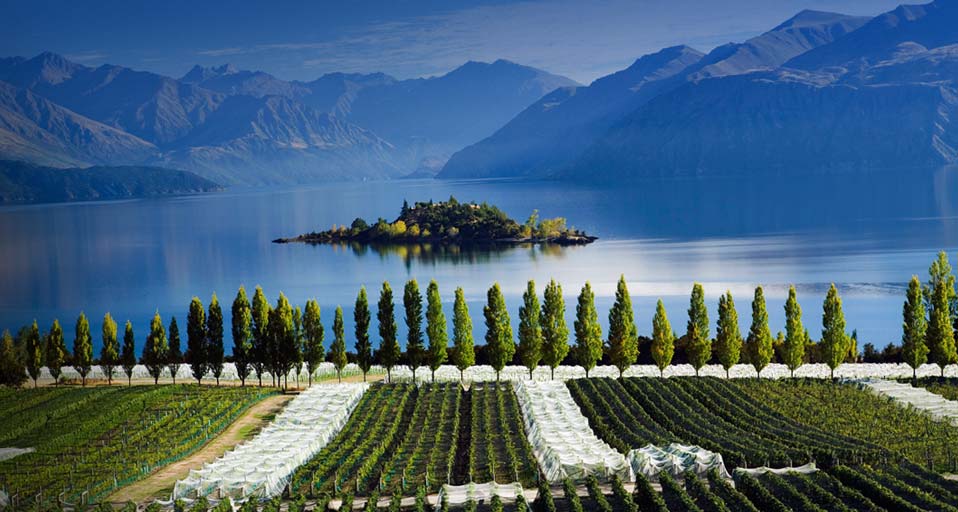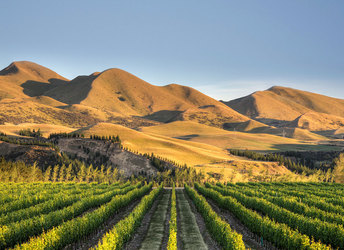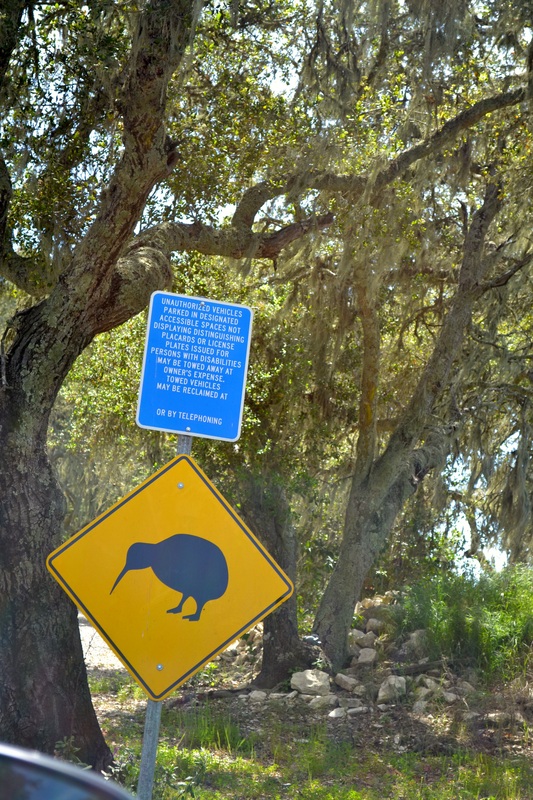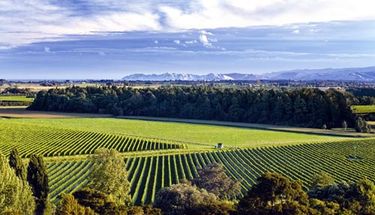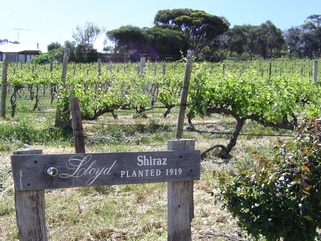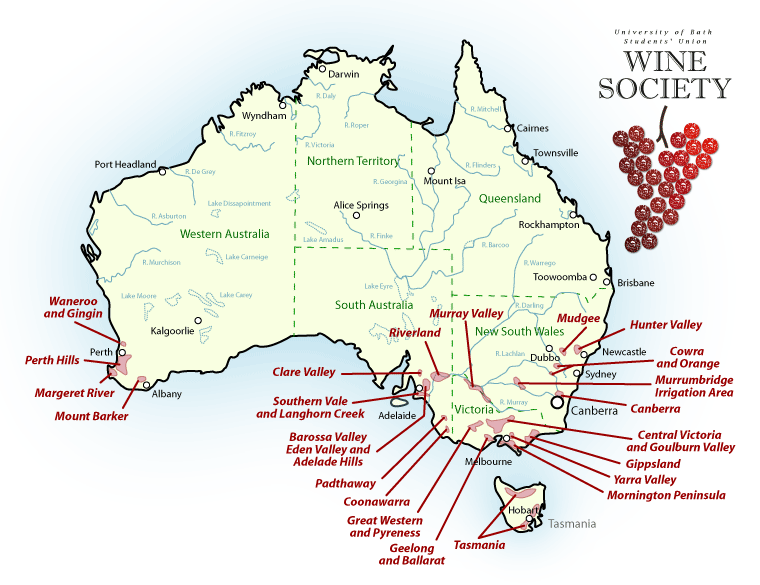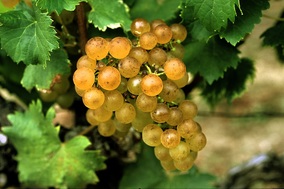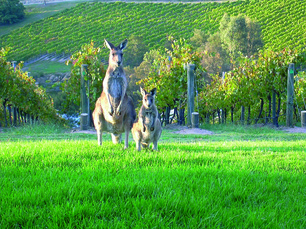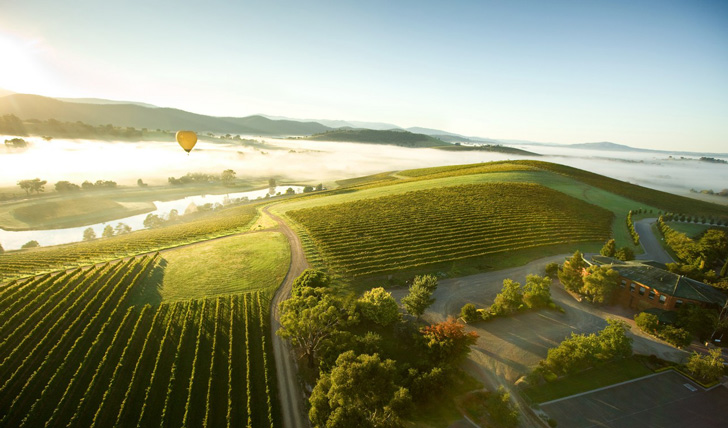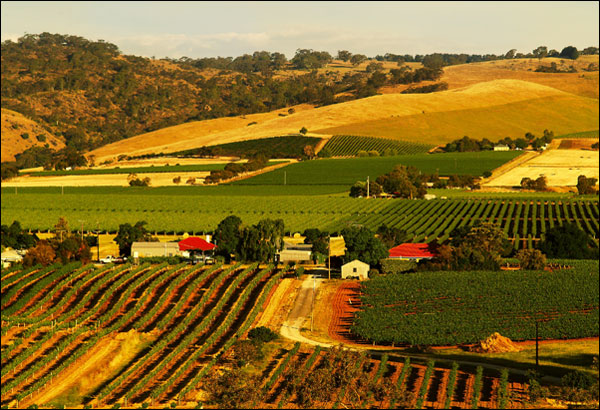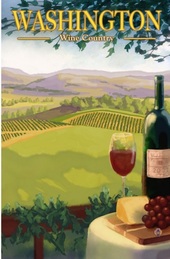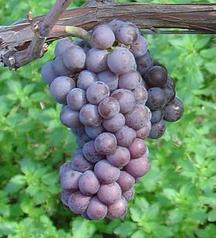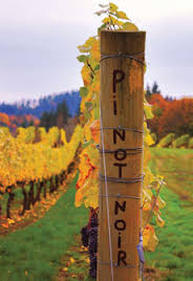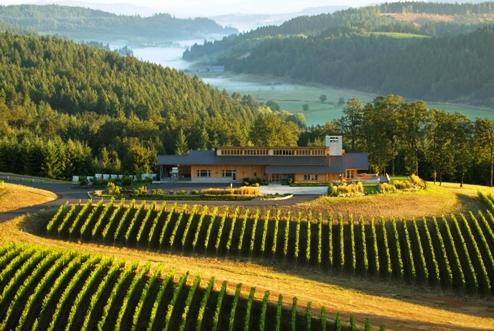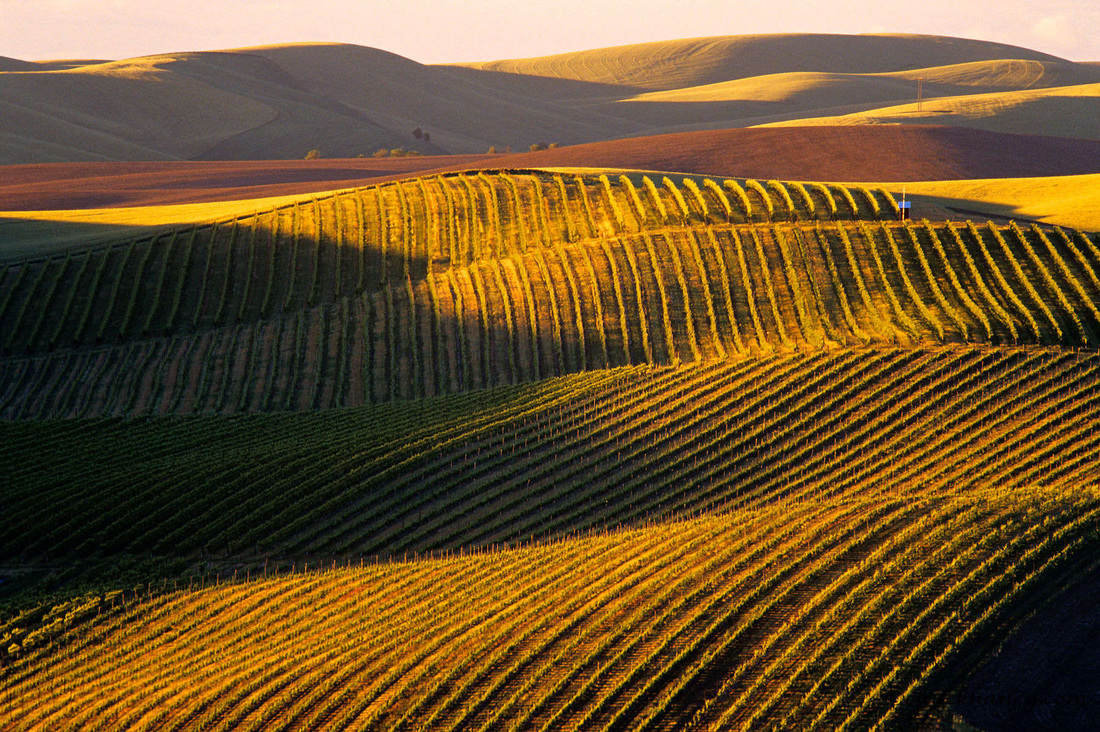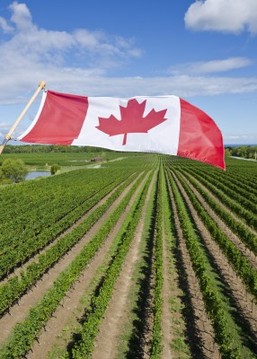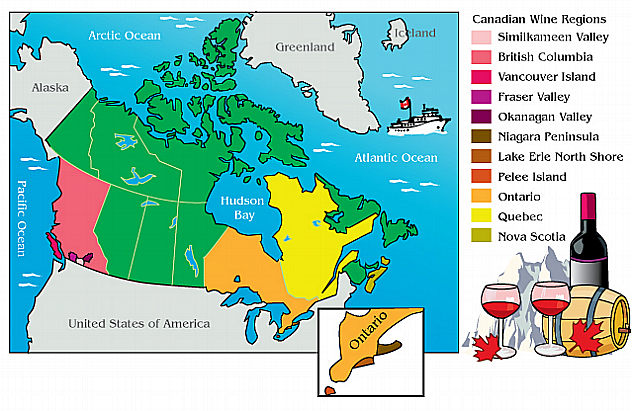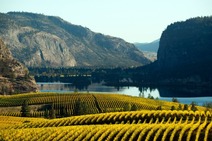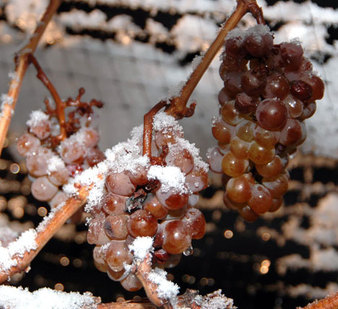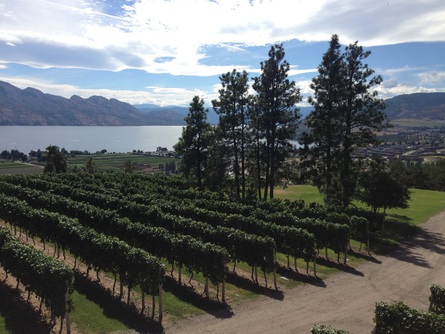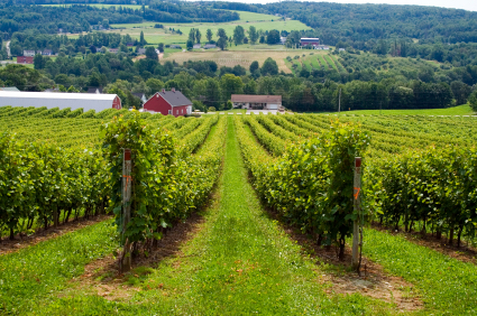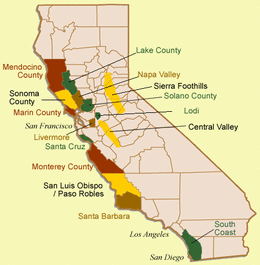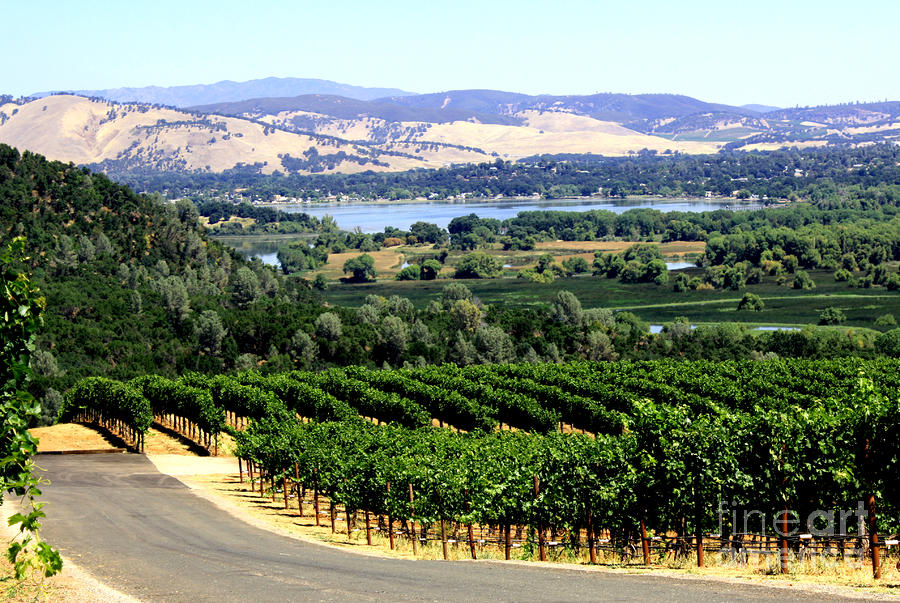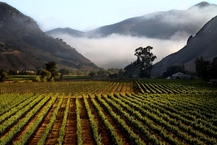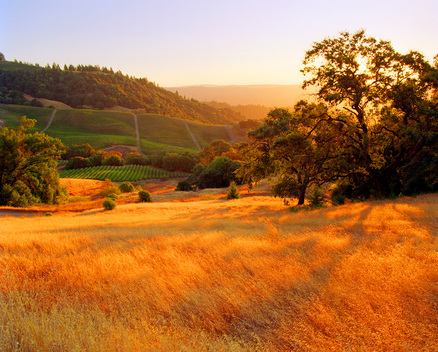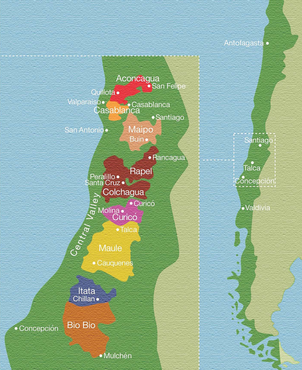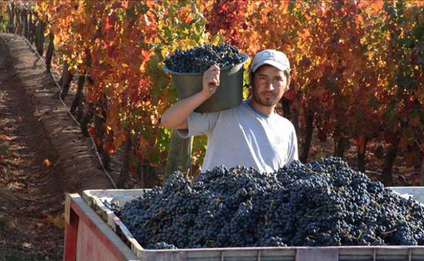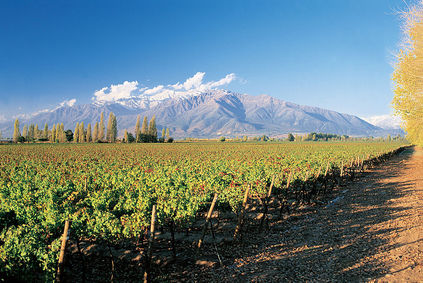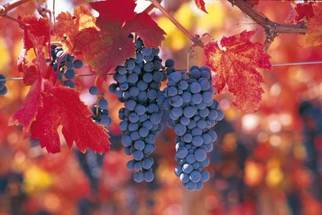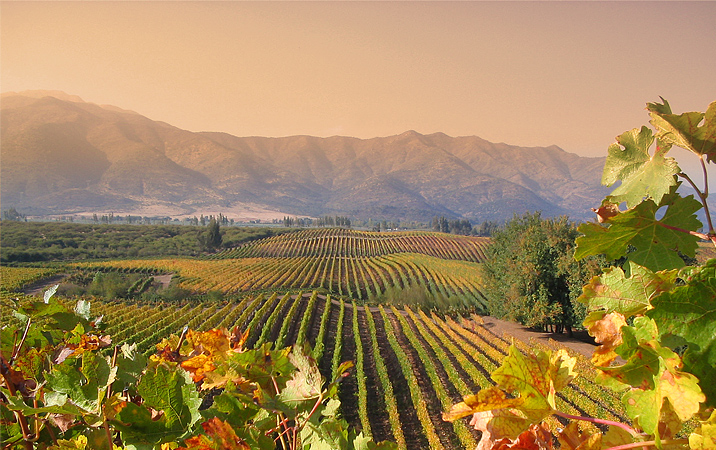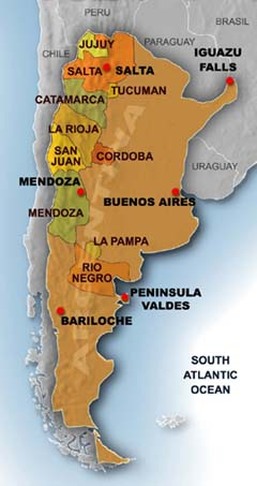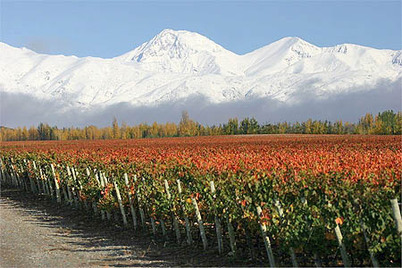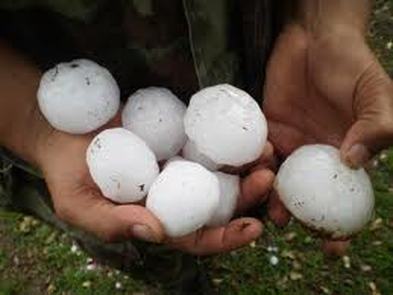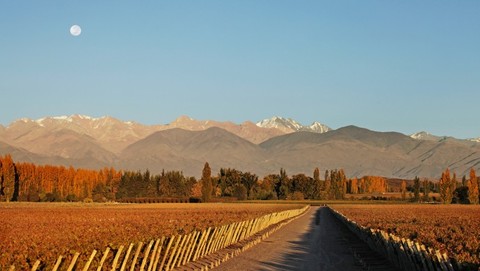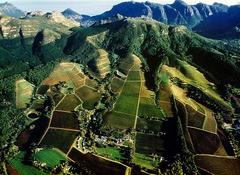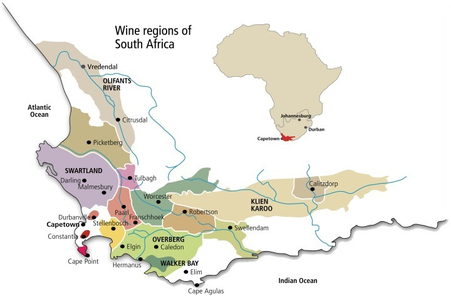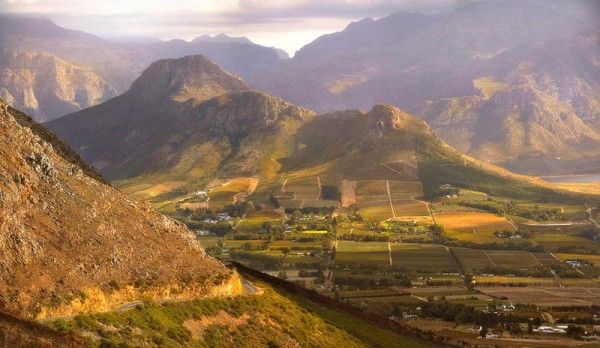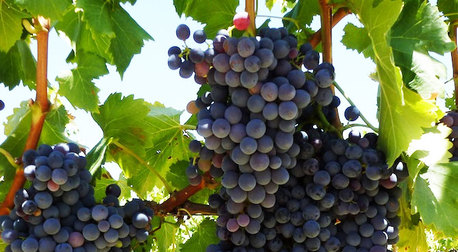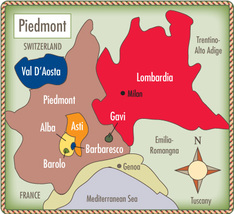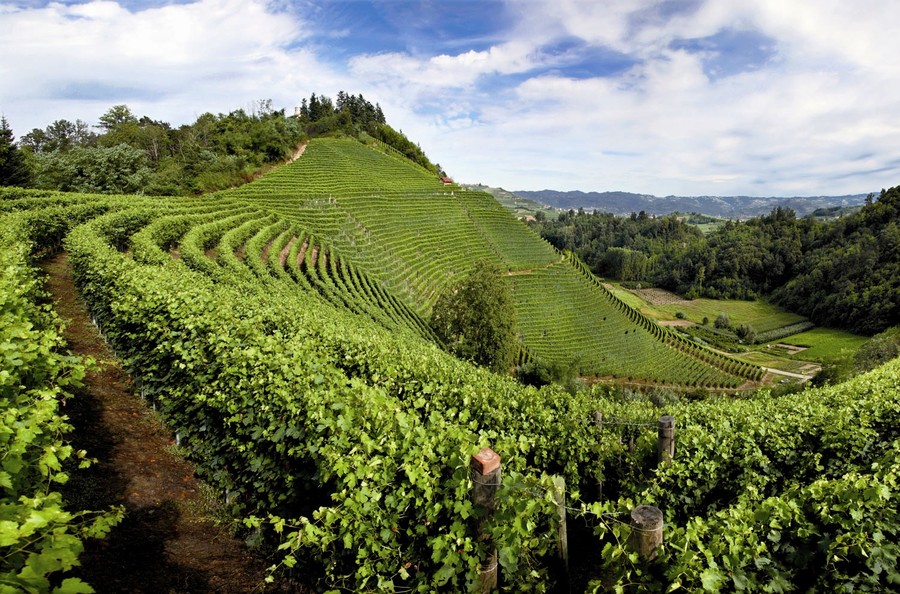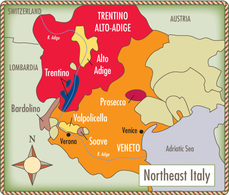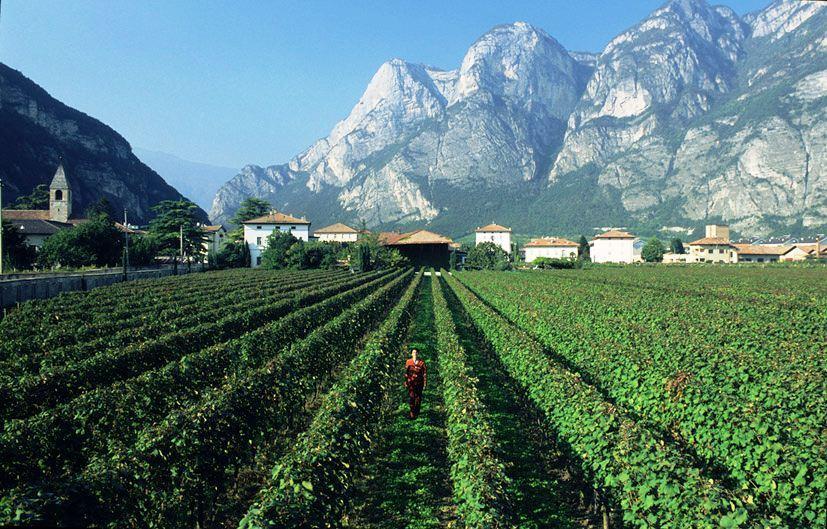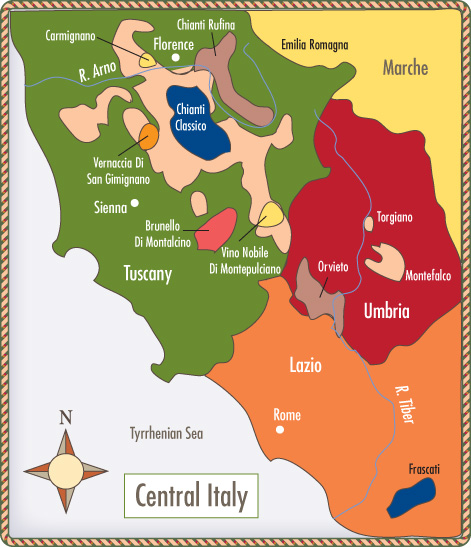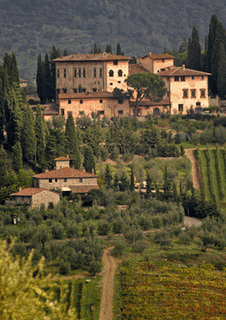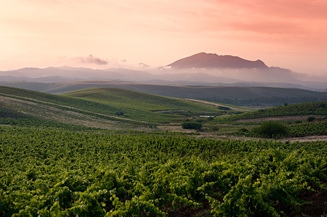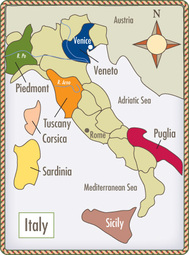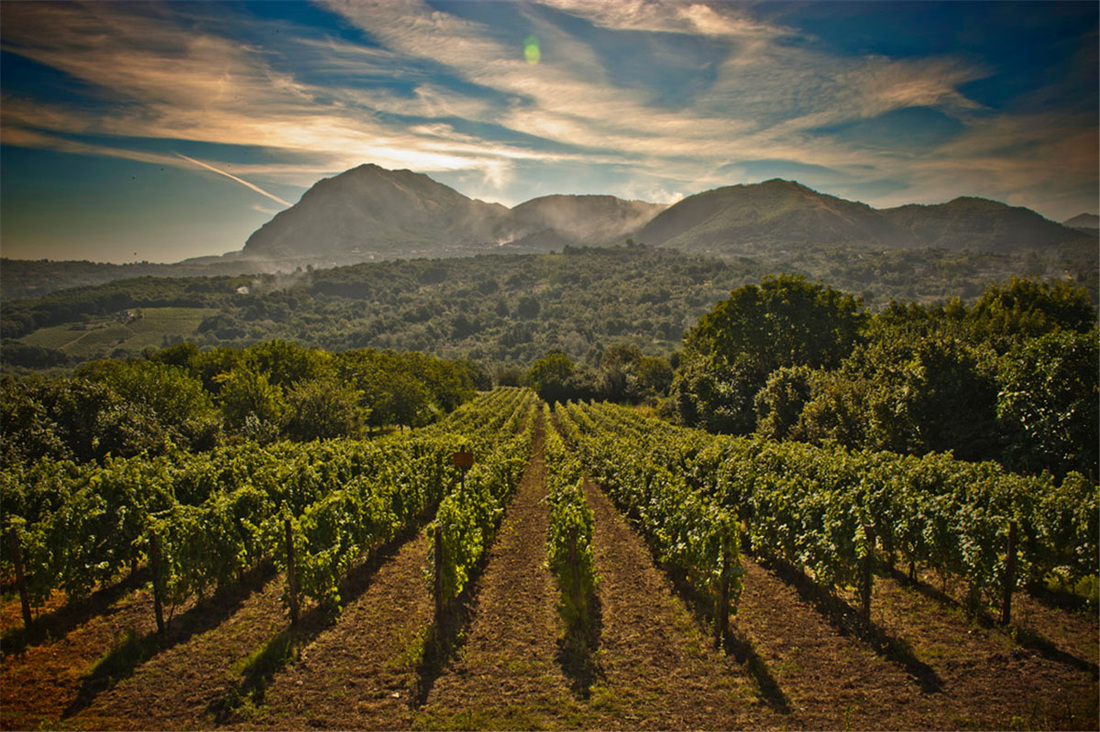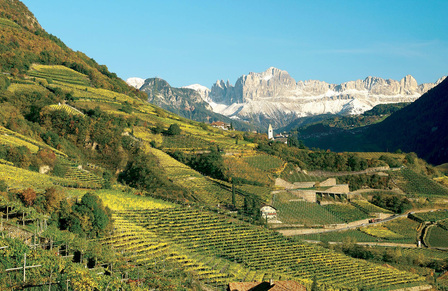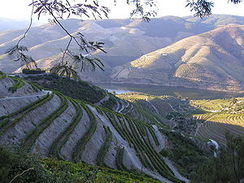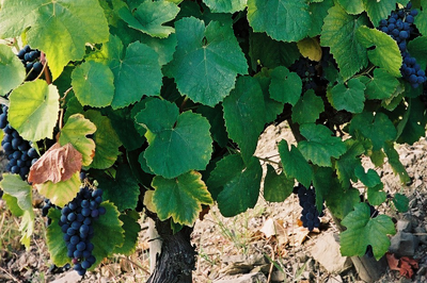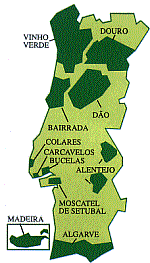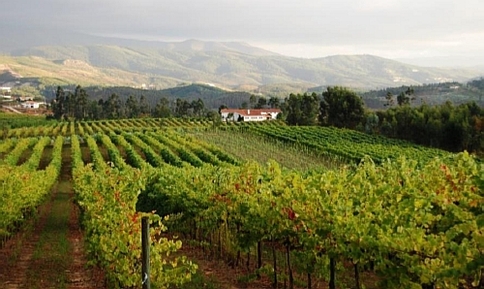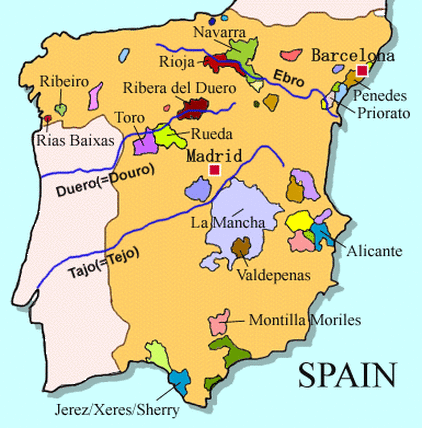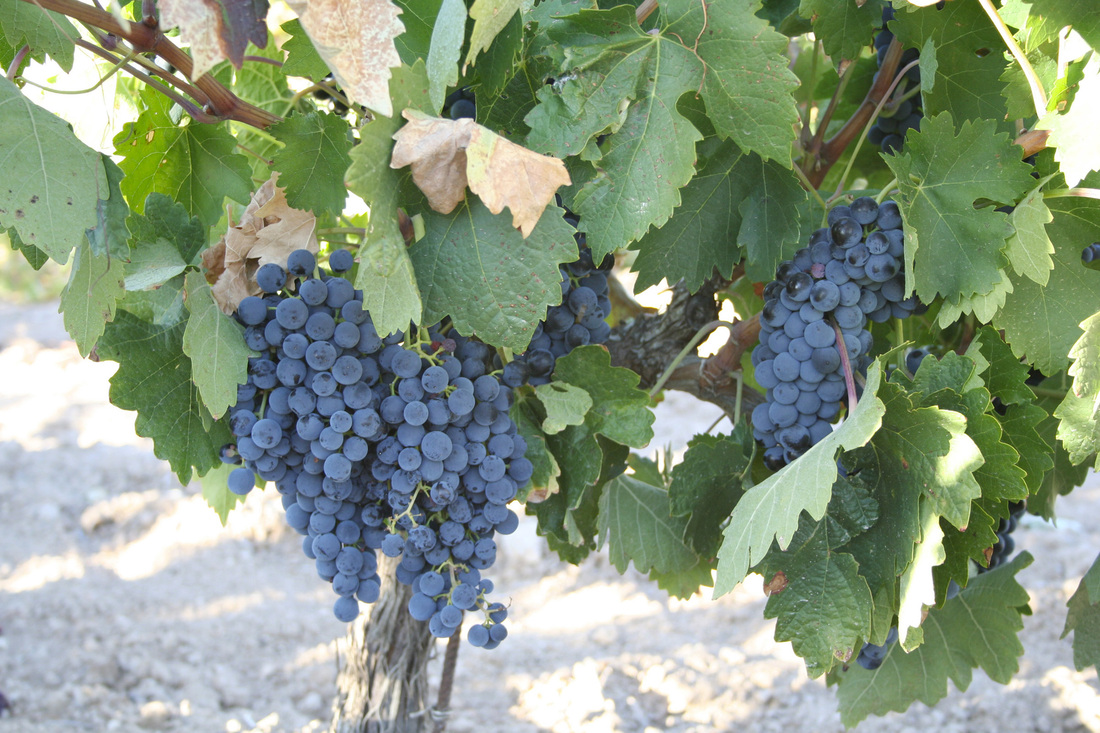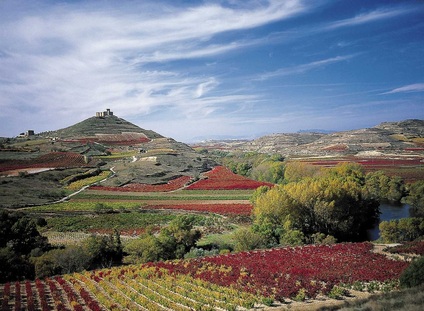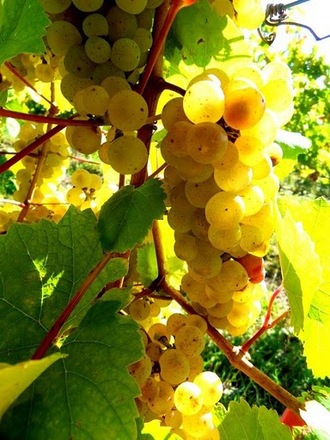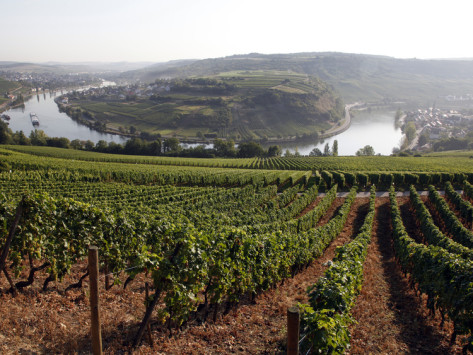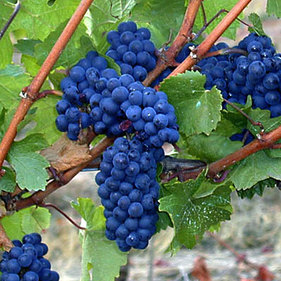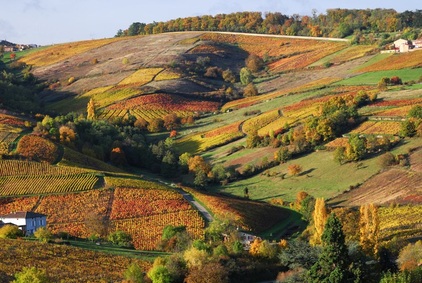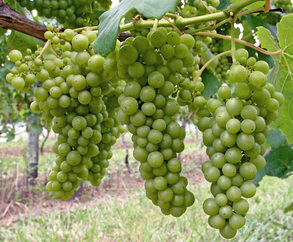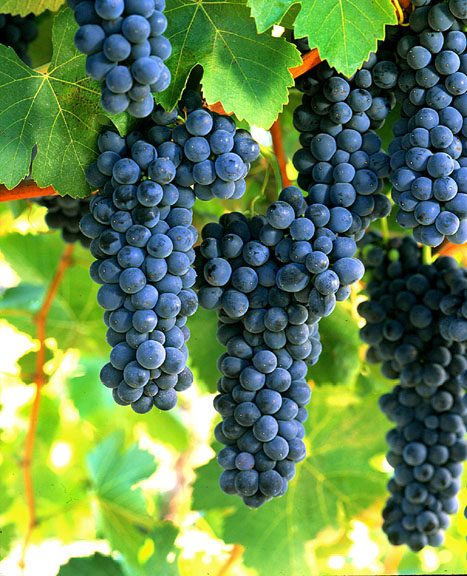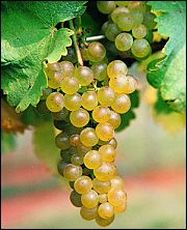Finally, the Central Otago region differs from all other New Zealand wine regions as it is inland, away from coastal climatic influences. The region has a continental climate with potential for hot summers and frost damage in the spring and autumn. Pinot Noir accounts for 80% of all plantings in Otago. Other important varieties are Pinot Gris, Chardonnay and Riesling.
Wine regions in the North Island include Auckland, which is the wettest and most humid part of New Zealand and which is known for its Cabernet Sauvignon and Merlot, from which Bordeaux-style blends are made. Hawke’s Bay is also getting increasing recognition for Syrah.
Gisborne on the north east coast is dominated by Chardonnay, which accounts for half of all vines planted. High temperatures and sunshine hours in the growing season result in a Chardonnay which has ripe tropical fruit flavours. Gewürztraminer from Hawke’s Bay is also gaining international recognition.
Wine regions in the North Island include Auckland, which is the wettest and most humid part of New Zealand and which is known for its Cabernet Sauvignon and Merlot, from which Bordeaux-style blends are made. Hawke’s Bay is also getting increasing recognition for Syrah.
Gisborne on the north east coast is dominated by Chardonnay, which accounts for half of all vines planted. High temperatures and sunshine hours in the growing season result in a Chardonnay which has ripe tropical fruit flavours. Gewürztraminer from Hawke’s Bay is also gaining international recognition.
Australian Viticulture
Although, historically, there was an excessive supply of Shiraz, many ancient, low-yielding vineyards were destroyed during the wine-pull scheme of the 1980s. Now however, old vines are highly valued with the age of the vine considered to be an important factor contributing to the quality of wine produced. Key regions for Shiraz include the Barossa Valley in South Australia, Hunter Valley in New South Wales and Margaret River in Western Australia.
Margaret River and Coonawarra, to the south of the Barossa Valley are important growing regions for Cabernet Sauvignon. In recent years, Australia has also seen the widespread experimentation with Spanish and Italian grape varieties which are suited to the country's warm climate.
Margaret River and Coonawarra, to the south of the Barossa Valley are important growing regions for Cabernet Sauvignon. In recent years, Australia has also seen the widespread experimentation with Spanish and Italian grape varieties which are suited to the country's warm climate.
Semillon Grapes
|
Many of Australia's best white wines are made from Riesling grapes grown in South Australia's Clare and Eden Valleys. Tasmania is also developing a reputation for high-quality Rieslings.
Although Semillon is widely planted, the classic region is the lower Hunter Valley. Chardonnay is also widely planted, although the Adelaide Hills region in South Australia has gained a reputation for complex and elegant Chardonnays. The Yarra Valley and Mornington Peninsula in Victoria are also known for their Chardonnay, as well as Pinot Noir. |
Margaret Valley in Western Australia has a moderate to warm maritime climate which is very similar to Bordeaux's. Bordeaux grapes such as Cabernet Sauvignon, Merlot, Semillon and Sauvignon Blanc are widely planted here. Meanwhile, cooler Tasmania is building a reputation for Pinot Noir and for aromatic Alsatian varieties such as Gewurztraminer and Pinot Gris.
The warmer, drier eastern part of the state is home to the vast Columbia Valley AVA which extends south into Oregon. Smaller AVAs within the Columbia Valley region include the Horse Heaven Hills, Rattlesnake Hills, Walla Walla and the Yakima Valley. Although the Columbia Valley has a continental climate a wide range of microclimates exist. The Yakima Valley is the oldest agricultural region in the state (established in 1983) and is also the third largest, responsible for more than 40% of the state's entire wine production. The Walla Walla AVA was established in 1984. Along with its wine, Walla Walla is known for its sweet onions, which is a local food and wine pairing favourite – especially when paired with locally produced Merlot.
Pinot Gris Grapes
|
Oregon has three main wine regions, two of which (Willamette Valley and Southern Oregon) are wholly within Oregon and the third (Columbia Gorge) straddles the Columbia River and extends into neighbouring Washington State.
Oregon’s largest wine region, the Willamette Valley, has a maritime climate with cool, wet winters and warm dry summers. The region is best known for Pinot Noir, although Pinot Gris, Riesling and Chardonnay are also produced in large quantities. Other grapes that are grown in smaller amounts include Cabernet Sauvignon, Gewürztraminer, Sémillon, Zinfandel and Müller-Thurgau. |
Southern Oregon comprises two smaller regions, the Rogue Valley and the Umpqua Valley. Grapes grown here include Tempranillo, Baco Noir, Pinot Noir, Pinot Gris, Cabernet Sauvignon, Chardonnay, Riesling and Grüner Veltliner, which is grown primarily in Austria, Slovakia, and the Czech Republic.
The type of grapes grown varies from north to south. In the south, where the temperatures are warmest, red grape varieties such as Cabernet Sauvignon, Merlot and Syrah do well and there are also smaller plantings of Malbec and Petit Verdot, which are used as blending grapes. Other grape varieties grown widely throughout the Okanagan region include Chardonnay, Pinot Noir, Gewürztraminer, Riesling, Pinot Gris, Pinot Blanc and Gamay Noir.
In northern and central parts of the Okanagan there have been considerable plantings of hybrids such as Vidal Blanc, Baco Noir and Maréchal Foch, as well as grapes from Austria and Germany. These include red grapes such as Zweigelt and Blaufränkisch and white grapes such as Kerner, Ortega and Bacchus. Pinot Noir, Pinot Gris and the Austrian and aromatic German varieties are also widely planted in the regions closer to the coast, including the Fraser Valley, Vancouver Island and the Gulf Islands.
In northern and central parts of the Okanagan there have been considerable plantings of hybrids such as Vidal Blanc, Baco Noir and Maréchal Foch, as well as grapes from Austria and Germany. These include red grapes such as Zweigelt and Blaufränkisch and white grapes such as Kerner, Ortega and Bacchus. Pinot Noir, Pinot Gris and the Austrian and aromatic German varieties are also widely planted in the regions closer to the coast, including the Fraser Valley, Vancouver Island and the Gulf Islands.
Frozen Vidal Grapes
|
In Ontario, Canada’s largest grape growing province, the vineyards are located close to the Great Lakes, which help to moderate what would otherwise be an inhospitable climate for the vines. Ontario vineyards cultivate the same range (and many of the same type) of grape varieties, as BC – including the hybrids and, especially Vidal Blanc, which is widely used in Ontario for producing ice wine. The main growing regions in Ontario are Niagara Peninsula, Lake Eire North Shore and Prince Edward County. These collectively account for 5,500 hectares of grape plantings.
The ability of vines to withstand cold winter temperatures of minus 35 degrees is one of the factors influencing the sort of grape varieties which are planted in Quebec. Some of these varieties are not commonly found elsewhere and include grapes such as Frontenac, Sabrevois, Elmer Swenson 517, Vandal-Cliché and Saint-Croix. In Quebec, over 200 hectares of grapes are cultivated in five major growing regions. Although there are several vineyards in Canada’s Maritime Provinces, the largest region for wine production is Nova Scotia’s Annapolis Valley. Wine from this region tends to be made from hybrid varieties such as L’Acadie Blanc – created in Ontario in the late 1950s – and Seyval Blanc, developed in France in the 1920s. |
In the hot, dry Central Valley, grapes are grown on an
industrial scale with automated irrigation and high yields characterising
regional viticulture. In the Coastal regions such as Sonoma,
Monterey and Santa Barbara, the currents of the Pacific Ocean have a
strong influence on the climate, creating cooling mists and fog which rolls in
during the day and provides both humidity and temperature contrasts. During the
growing season the Central Valley landmass heats up and pulls the fog in from
the Pacific Ocean through gaps in the coastal mountain range. This helps to
ripen grapes more slowly ensuring that they develop fruit intensity while retaining
their acidity. In regions where there is no exposure to the ocean, such as the
Central Valley, summer temperatures can regularly reach 40 degrees or more.
Zinfandel Grapes
|
The Napa Valley is home to the most expensive vineyard land
the most prestigious wineries of California. In the warmer northern end of the
valley, where there is no moderating influence from coastal fog, Cabernet
Sauvignon is the dominant grape variety. In the southern district of Carneros,
where there is a significant cooling effect from the ocean, Chardonnay and
Pinot Noir is widely grown. Chardonnay is also widely grown in Sonoma County
where the Russian River Valley and Alexander Valley are famous for producing
premium Chardonnay wines. Russian River Valley has also become renowned for Pinot Noir.
Zinfandel is California's second most planted red grape after Cabernet Sauvignon. Although Zinfandel was, for many years, the most widely planted grape, it was mistreated, planted in regions that were too hot and allowed to overproduce. California has many old vineyards with Zinfandel, with Lodi being a notable producer. Increasingly, both Merlot and Sauvignon Blanc are benefiting from plantings in cooler sites, including Monterey and the north coast regions. Meanwhile, the current fashion for Rhone-style wines has led many growers to plant varieties such as Syrah, Viognier and Marsanne. |
The Central Valley, Chile's most productive and internationally known wine region, contains the sub-regions of Maipo, Rapel, Curicó and Maule. Maipo, the classic heartland of Chile's wine industry thanks partly to its proximity to the capital has a reputation for Cabernet Sauvignon, Chile's most widely-planted grape variety. Rapel is a large and varied area. In the north, a warm area which is cut off from ocean breezes, Carménère ripens well. In cooler eastern edges of Rapel, which lie in the foothills of the Andes, Cabernet Sauvignon and Syrah are performing increasingly well.
Carménère Grapes
|
In the Colchagua Valley, also in Rapel, a wide range of grape varieties are grown, including Cabernet Sauvignon in the inland areas and white grape varieties nearer the coast. Curicó and Maule, in the southern half of the Central Valley, form the largest of Chile's vineyard areas and are important sources of fruit for inexpensive blended wines.
Beyond the Central Valley, important viticultural regions in Chile include Aconagua, which includes the Casablanca and San Antonio sub-regions to the south. Northern Aconagua is red grape territory, with Cabernet Sauvignon, Merlot and Carménère fairing particularly well. Meanwhile, Casablanca and San Antonio are influenced by morning fogs and ocean winds and are important areas for Chardonnay and Sauvignon Blanc. Pinot Noir also does well in cooler San Antonio. Chile's southern regions of Itata and Bio Bio are dominated by plantings of Muscat of Alexandria and País. País was brought to the region by Spanish in the 16th century. It continues to be the second most planted variety in Chile, after Cabernet Sauvignon. Bio Bio has also started to show great promise for Pinot Noir, as well as Chardonnay and aromatic varieties such as Gewürztraminer. |
Malbec and
|
Historically viticulture was dominated by the cultivation of the high-yielding pink skin grapes, Cereza, Criolla Chica and Criolla Grande. These grapes still account for 30% of all plantings in Argentina. The diversity of grapes now grown in Argentina reflects the influence of international groups of settlers. The French brought Malbec to Argentina in 1855 along with other Bordeaux varieties. Malbec is now the single most widely-planted grape in Argentina and is increasingly viewed as Argentina’s signature grape variety. Bonarda, the second most widely-planted grape (grown mostly in eastern Mendoza) is thought to have been brought to Argentina by the Italians. French, Italian and Spanish varieties are increasingly widespread in Argentina and include both red grapes (Cabernet Sauvignon, Merlot, Syrah, Tempranillo, Nebbiolo and Sangiovese) and white grapes (Chardonnay, Viognier, Chenin Blanc, Riesling, Semillon and Muscat of Alexandria). Argentina’s most widely-planted white grape variety is Pedro Giménez, a relative of Spain’s Pedro Ximénez.
Mendoza province dominates Argentinean winemaking, accounting for 60-70% of total output. Malbec has become the region’s most widely-planted grape, alongside major plantings of Cabernet Sauvignon, Tempranillo and the Italian varieties. By contrast, the Cafayate region in Salta province – home to the world’s highest vineyards – accounts for just 2% of annual wine production. However, Cafayate has gained a reputation for Torrontés, which dominates regional plantings and which is increasingly viewed as Argentina’s signature white grape varieties (see Drinking section for more information). Grape cultivation in Cafayate benefits from wide “diurnal temperature variations (daytime versus night-time temperature differences). |
Although much of the viticultural
region around Cape Town as a Mediterranean climate, with hot dry summers and
relatively cool wet winters, a number of regions, including Constantia, the
Overberg and Walker Bay benefit more from cooling oceanic influences. This
influences the sort of grapes that are successful there. For example,
Constantia has a reputation for quality white grape varieties such as Sauvignon Blanc
and Semillon. Walker Bay and Elgin in the Overberg also have a reputation for
good Sauvignon Blanc, as well as high quality Pinot Noir. The coastal regions are also affected by the cooling Benguela Current (which flows in from Antarctica), as well as the "Cape Doctor", a strong, persistent and dry south-easterly wind which blows onto South Africa's coastline from spring to late summer (September to March in the southern hemisphere). Warmer inland
regions such as Stellenbosch, Paarl and Swartland have a reputation for red
grape varieties such as Cabernet Sauvignon, Merlot, Shiraz and Pinotage, as
well as white grapes such as Chenin Blanc. In the semi-dessert region of Klein
Karoo, Portuguese grape varieties such as Touriga Nacional and Tinta Barocca
are successfully grown.
As of 2011, 56% of plantings in South Africa consisted of white grape varieties, down from 59% in 2001. Chenin Blanc accounts for 18% of all plantings, with Cabernet Sauvignon being the most widely-planted red grape at 12% of the total. The white grape Colombard is the third most-widely planted variety, accounting for 11% of the total. South Africa's signature grape Pinotage accounts for just 6.5% of total plantings, behind international grape varieties such as Chardonnay (8% of plantings), Sauvignon Blanc (9%) and Shiraz (9.8%). Other grape varieties that have a long history in South Africa include two varieties of the Muscat family, Muscat of Alexandria (known as Hanepoot in South Africa) and Muscat Blanc à Petits Grains (known in South Africa as Muscat de Frontignan or simply Muscadel).
Recent years have seen a growing experimentation with international varieties, including Riesling (known locally as Weisser Riesling), Viognier, Gewürztraminer, Cabernet Franc and Zinfandel/Primitivo. South African producers have also experimented with grape varieties from Portugal (noted above), Spain (including the main Sherry grape Palomino) and Italy (Sangiovese and Trebbiano).
As of 2011, 56% of plantings in South Africa consisted of white grape varieties, down from 59% in 2001. Chenin Blanc accounts for 18% of all plantings, with Cabernet Sauvignon being the most widely-planted red grape at 12% of the total. The white grape Colombard is the third most-widely planted variety, accounting for 11% of the total. South Africa's signature grape Pinotage accounts for just 6.5% of total plantings, behind international grape varieties such as Chardonnay (8% of plantings), Sauvignon Blanc (9%) and Shiraz (9.8%). Other grape varieties that have a long history in South Africa include two varieties of the Muscat family, Muscat of Alexandria (known as Hanepoot in South Africa) and Muscat Blanc à Petits Grains (known in South Africa as Muscat de Frontignan or simply Muscadel).
Recent years have seen a growing experimentation with international varieties, including Riesling (known locally as Weisser Riesling), Viognier, Gewürztraminer, Cabernet Franc and Zinfandel/Primitivo. South African producers have also experimented with grape varieties from Portugal (noted above), Spain (including the main Sherry grape Palomino) and Italy (Sangiovese and Trebbiano).
Meanwhile, Italy’s second-most important red wine, Valpolicella, is produced mainly from Corvina grapes grown on the limestone and granite slopes to the north of Verona. Other grapes grown in Valpolicella and used in the production of Valpolicella wines include Rondinella and Molinara.
|
Alto-Adige Vineyards
|
Bardolino wines are made from the same grapes as Valpolicella. However, these wines are made from grapes grown on a glacial moraine between Verona and Lake Garda. Other important viticultural regions in northern Italy include Alto-Adige, Grave del Friulio and Trentino, the latter region being an important source of wines made from Pinot Grigio grapes.
|
Central Italy
Although plantings of Sangiovese grapes stretch from Romagna in the north to Puglia in the south, Tuscany in central Italy is “the spiritual home” of this important grape. Viticulture in Tuscany is divided into two bands running north-south. The coastal strip, with relatively low altitude, is ideal for Bordeaux grape varieties such as Cabernet Sauvignon and Merlot, as well as white grapes such as Chardonnay, Sauvignon Blanc and Verdicchio. Inland, a wide variation in day and night temperatures encourages the development of Sangiovese grapes with their firm acidity. Altitude here can reach 500 metres. Other key grape varieties grown in central Italy include the white grapes Verdicchio (grown extensively in Marche), Trebbiano (Abruzzo and Umbria), Malvasia (Lazio and Umbria) and the red grape Montepulciano (Abruzzo) and Marche). |
Tuscany Vineyards
|
|
Southern Italy
In the south of Italy, red grape varieties dominate. Key grapes include Aglianico, which is widely-planted in Campania and Basilicata and whose high acidity and tannin has earned Campania’s Tauasi district the title of “Barolo of the south”. In Puglia on the east coast, the flat sun-scorched vineyards play host to international varieties as well as local black grapes such as Malvasia Nera, Negroamaro and Primitivo (Zinfandel). |
Sicily Vineyards
|
Italy’s largest region, Sicily, also has the largest area under vine (although not DOC vineyards). Here, traditional varieties such the red Nero d’Avola and whites Inzolia and Catarrato are increasingly planted alongside international grapes such as Chardonnay and Syrah.
|
Vinho Verde Wine Region
|
White grape varieties indigenous to Portugal include Arinto, which is an important component of white wine blends in Vinho Verde. Vinho Verde’s climate is strongly influenced by its proximity to the Atlantic, which brings cooling winds ad rainy winters. White grape varieties grow best in this environment and, along with Arinto, the main local varieties are Loureiro, Trajadura, Avesso and Alvarinho (Albariño in Spain). Arinto is also widely grown in central and southern Portugal, including the hot dry Alentejo region, along with Fernão Pires and Antão Vaz, which produce full-bodied nutty white wines.
Spanish Viticulture
Viticulture (grape cultivation) is scattered across various parts of Spain. The most important and well-known regions include Rioja and Navarra on the Elbo river in north-east Spain; Ribera del Duero in the Duero River running towards Portugal; and Rías Baixas in north-west Spain on the Atlantic Coast. Other important areas for grape cultivation and wine production include La Mancha in central Spain; the region to the south of Valencia (including Jumilla) and Catalunya (CatalonIa).
Spain’s premier grape variety, and the country’s most widely-planted red grape, is Tempranillo. This thick-skinned grape is widely-grown in northern and central Spain. The name of the grape comes from the Spanish word temprano (meaning “early”), a reference to the way it ripens several weeks before most Spanish red grapes. Other important red grape varieties include Garnacha and Monastrell (known in France and elsewhere as Grenache and Mourvèdre). Both of these grapes benefit from dry, sunny weather. Monastrell in particular is very drought-tolerant, one reason why it's become the most widely-planted grape in the area south of Valencia (as well as in part of Catalunya. Meanwhile, Tempranillo and Garnacha are the most important grapes in Rioja, Navarra, Ribera del Duero and Catalunya. Plantings of Tempranillo are also increasing in other parts of Spain. |
When it comes to white grape varieties, it’s interesting that Spain’s (and allegedly the world’s) most widely planted grape isn’t used to make much wine at all. Airén dominates plantings in the massive La Mancha region in central Spain. However, most of these grapes are used for making Spanish brandy.
The two most important white grapes in Spain for wine production are Albariño and Verdejo. Albariño dominates plantings in the Galician coastal region of Rías Baixas in north-west Spain. Meanwhile, Verdejo is the traditional grape of Rueda on the Duero River. Here, cool evenings ensure that Verdejo’s aromatic peach and melon flavours and high acidity are both maintained.
Alongside Spain’s national “champion” grapes is the cultivation of a growing quantity of international grape varieties. Plantings or red and white grapes – including Cabernet Sauvignon, Merlot, Chardonnay and Sauvignon Blanc – are becoming increasingly common in Catalunya, La Mancha and (in the case of red grapes) Navarra.
The two most important white grapes in Spain for wine production are Albariño and Verdejo. Albariño dominates plantings in the Galician coastal region of Rías Baixas in north-west Spain. Meanwhile, Verdejo is the traditional grape of Rueda on the Duero River. Here, cool evenings ensure that Verdejo’s aromatic peach and melon flavours and high acidity are both maintained.
Alongside Spain’s national “champion” grapes is the cultivation of a growing quantity of international grape varieties. Plantings or red and white grapes – including Cabernet Sauvignon, Merlot, Chardonnay and Sauvignon Blanc – are becoming increasingly common in Catalunya, La Mancha and (in the case of red grapes) Navarra.
German Viticulture
White grapes account for just over 60% of all plantings in Germany. This is largely due to climate, with most of Germany’s wine regions having cool continental conditions. One exception is Baden, which is the warmest and most southerly wine region. Baden is the only region in Germany where red grape varieties are in the majority. The most widely-planted red grape in Baden (and in Germany as a whole) is Spätburgunder (Pinot Noir).
Riesling is the most widely-planted grape variety in the country overall, accounting for one fifth of all plantings. Key growing regions for Riesling include the Mosel, Nahe, Rheingau and Rheinhessen. The next most-widely planted grape is Müller-Thurgau (also known as Rivaner). Müller-Thurgau is one of the main grapes in the production of Liebfraumilch. Although it lacks the acidity and flavour intensity of Riesling, it can be used to produce floral, fruity wines. Müller-Thurgau dominated plantings throughout Germany for much of the 20th century. However, plantings are now in steady decline, although it remains the dominant grape in Rheinhessen. Spätburgunder (Pinot Noir) is the third most-widely planted grape in Germany, with Baden and Pfalz being key growing regions. Next in line is Silvaner, which is important in Rheinhessen and Franken and which is often described as having neutral fruit flavours. The other main red grape variety, Dornfelder, was only developed in 1956 and produces deeply-coloured wines. Although red and black grapes accounted for one tenth of German vineyards in the 1980s, rising domestic demand for red wine has encouraged plantings to the point where they account for almost 40% of the total. Although most German vineyards are planted on plains and valley floors, the best wines come from vineyards on steep valley slopes. This is for various reasons, including well-drained soils, sun exposure and smaller yields (smaller yields = better quality). |
Riesling Grapes
|
2011 was reportedly one of Germany's best vintages since the 1970s. In 2011 a mild winter and warm spring encouraged grape vines to flower almost a month earlier than usual. Although frost in May and rain in June negatively affected some growing regions, an Indian summer allowed many of Germany's best producers to postpone the harvest until November. Most of the good dry Rieslings from the middle Mosel region reportedly missed the August hail. In the Saar area of the Mosel, growing conditions were said to have been "perfect".
Burgundy & Beaujolais ViticultureChardonnay and Pinot Noir, the two main grape varieties grown in Burgundy, are both very sensitive to variations in “terroir” (see separate box story bellow). Although Pinot Noir is cultivated throughout the world, with notable growing regions including California, Chile, New Zealand (Central Otago) and Germany (where it is known as Spätburgunder), growers frequently experience failure. In addition to being sensitive to climate variations, thin skins make Pinot Noir grapes susceptible to mould and fungus. Excess rainfall can make the berries swell and split, while the closely clustered bunches make it difficult for the wind to dry the grapes. When faced with inadequate sunshine, the vines may produce white grapes (Pinot Blanc) or even greyish-pink grapes (Pinot Gris). Pinot Noir’s reputation as a difficult grape to cultivate has given rise to its nickname the “heartbreak grape”.
In Burgundy, the steepness or direction of the slopes, as well as the depth, drainage, heat retention and mineral content of the soils, can vary dramatically within small areas. This means that wines produced from Burgundy grapes vary in terms of style and quality. The best growing sites are on the mid-slope, which act as suntraps and catch the deepest layer of slope-wash. |
Pinot Noir - "Heartbreak Grape" |
Although Chardonnay and Pinot Noir dominate plantings in Burgundy, other varieties grow in smaller quantities, notably Gamay and Algoté. This latter grape, which is widely grown in parts of Eastern Europe – including Moldova – tends to be grown on the highest and lowest slopes in Burgundy, leaving the best land free for growing Chardonnay and Pinot Noir. According to wine expert Jancis Robinson, Algoté produces “neutral, sometimes eye-wateringly tart, every day wines”. In Burgundy these wines are often mixed with crème de cassis (blackcurrant liqueur) to make the aperitif known as kir.
In Beaujolais, viticulture is dominated by Gamay Noir grapes, which are originally descended from a cross between Pinot Noir and the ancient white variety Gouais, said to have been introduced to France from Central Europe by the Romans. The best Gamay wines are produced from grapes grown on granite soils.
In Beaujolais, viticulture is dominated by Gamay Noir grapes, which are originally descended from a cross between Pinot Noir and the ancient white variety Gouais, said to have been introduced to France from Central Europe by the Romans. The best Gamay wines are produced from grapes grown on granite soils.
"Terroir"Terroir refers to the unique conditions that are present within a vineyard; these include the type of soil, the climate and the topography.
The topography of a vineyard encompasses things such as altitude (increased altitude results in cooler temperatures); aspect (south-facing in the Northern Hemisphere, north-facing in the Southern Hemisphere, resulting in warmer temperatures); and slope (at night cold air from slopes sinks to the valley floor while warm from the valley rises - this exchange is important to help grapes ripen in cooler climates). Topography also affects the amount of drainage a soil has, with deep, well-drained soils on hillsides sometimes contrasting with poorly drained soils in valley floors. |
Loire Valley ViticultureThe vineyards of France’s Loire Valley region extend along the length of the country’s longest river. Viticulture (grape cultivation) is influenced by a mixture of climatic conditions, which range from the maritime climate at the western end of the Loire (warm summers and short, mild winters) to a continental “upstream” climate (severe winters and hot summers). Although many grape varieties are grown in the Loire, the most important of these are Sauvignon Blanc, Chenin Blanc, Cabernet Franc and Melon Blanc (Muscadet). Melon Blanc grapes are predominantly to the south of the Loire where it reaches the Atlantic Ocean. The best known vineyards are in the Muscadet-Sèvre et Maine appellation to the south and east of the city of Nantes.
Moving inland to the Anjou and Saumur regions – sometimes described as “the heartland of the Loire” – and the chief grapes are Chenin Blanc and Cabernet Franc. Further east still and the vineyards of the Touraine region (200 to 300 kilometres from the sea) grow mainly red cabernet Franc grapes in the west (Chinon and Bourgueil are key regions) and white Chenin Blanc grapes in the east (Vouvray). The far eastern end of the Loire, before the river turns south, is Sauvignon Blanc country, with key production regions including Sancerre and Poully-Fumé. These names, rather than the grape varieties, typically appear on bottle labels. |
Rhône ViticultureSyrah is the only red grape variety which is permitted to be grown in the northern vineyards. The northern Rhône location, together with the cooling effects of the northerly “mistral” winds, means that the Syrah grapes grow at the most northern point where they can ripen successfully. Here the river valley is quite narrow and steep, and it is no surprise that the most effective sites for growing Syrah have the best southerly exposure and are on very steep slopes. These sites are often on the lateral valleys which feed into the Rhône. These valleys protect the vines from the cold north winds.
Three white grapes are produced in the northern Rhône: Viognier, Marsanne and Roussanne. Although Viognier was close to extinction in the 1970s, dedicated efforts by some producers, together with a revival in the international popularity of Viognier, has helped to revive production and make plantings financially viable. Of the other two white grapes, Marsanne and Roussanne, has come to dominate production. Whereas Marsanne produces a regular crop, Roussanne is susceptible to rot and wind damage. |
Unlike the temperature in the northern Rhône, which has warm (but not oppressive) summers, the southern Rhône has a Mediterranean climate with mild winters and hot dry summers. In the south the valley of the Rhône opens out and, consequently, the vineyards are planted on much flatter terrain. Also, soils are more varied than in the north and many of the best sites have very stony soils which absorb the sun’s heat and warm the vineyard, aiding ripening.
Compared with the northern Rhône, many more grape varieties are grown in the south. Despite this, Grenache is the most widely-planted red grape variety. Grenache can tolerate drought and strong winds and requires plenty of heat to ripen fully. Other important red grape varieties grown in the southern Rhône include Syrah, Mourvèdre and Cinsault. Despite the cultivation of more white grape varieties, cultivation is on a much smaller-scale compared with the northern Rhône. In addition to Viognier, Marsanne and Roussanne, key white grapes include Clairette, Grenache Blanc and Bourboulenc.
Compared with the northern Rhône, many more grape varieties are grown in the south. Despite this, Grenache is the most widely-planted red grape variety. Grenache can tolerate drought and strong winds and requires plenty of heat to ripen fully. Other important red grape varieties grown in the southern Rhône include Syrah, Mourvèdre and Cinsault. Despite the cultivation of more white grape varieties, cultivation is on a much smaller-scale compared with the northern Rhône. In addition to Viognier, Marsanne and Roussanne, key white grapes include Clairette, Grenache Blanc and Bourboulenc.
Cultivation "Zones"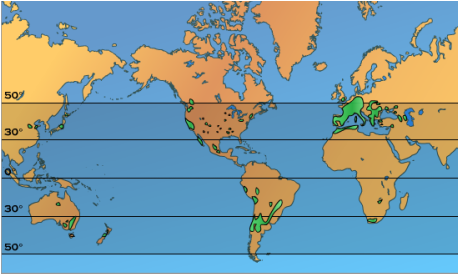
Two general geographical bands have been identified as being the most favourable to grape cultivation and wine production. these bands, known as temperate zones, are located between 30° and 50° latitude in both the northern and southern hemispheres. However, within these zones there are important climatic differences which vary according to the continent, country, region or district in question.
In terms of the actual wine-producing countries, most people are already familiar with so-called "old world" producers such as France, Italy and Spain, and with "new world" producers" such as the USA, Chile, Argentina and Australia. However, wine producing countries that people are usually less familiar with include Brazil, Canada, China, the Czech Republic, Denmark and Thailand. Temperature, sunlight, rain, humidity, wind and frost are the most critical climatic factors affecting grape cultivation. In the case of regions or districts that fall outside the most favourable latitudinal bands, it is possible to harness more optimal grape growing conditions by adjusting things such as altitude. For example, in Kenya, the Rift Valley Winery is producing wine from grapes grown on the foothills of Mount Longonot. Cabernet Sauvignon |
Bordeaux Viticulture
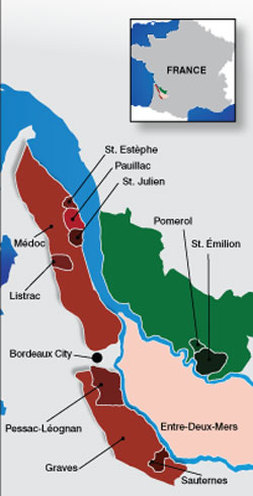
The grape varieties that are grown in different French regions are influenced not only by things such as soil types and climate, but also by “appellation” regulations, tradition and consumer demand. In the Bordeaux region, three black grapes (Cabernet Sauvignon, Merlot and Cabernet Franc) and two white grapes (Sauvignon Blanc and Sémillon) dominate plantings.
Cabernet Sauvignon (Cab Sav) with its thick-skins and high tannins prefers the gravelly soils of the Médoc and Haut Médoc regions, which stretch to the north west of Bordeaux city. The reason for this is that gravelly soils have good drainage and retain the sun’s heat. This stored heat is particularly beneficial for Cab Sav which has late ripening tendencies and needs long periods of sustained warmth. Bordeaux sits near the confluence of two rivers, the Garonne and the Dordogne. This setting gives rise to the use of the terms “Left Bank” and “Right Bank”. In contrast to the gravelly soils of the Left Bank, the Right Bank region to the north of the Dordogne (see green section on map) has mainly clay on limestone soils. These cooler, damper clay soils are suited to Merlot which, together with Cabernet Franc, is the dominant grape variety in the Saint Emilion and Pomerol areas. The region between the rivers Garonne and the Dordogne, known as Entre-Deux-Mers (meaning “between two seas”), is known for its dry white wines, with Sauvignon Blanc being the most widely-grown variety. Also on the Left Bank, to the south of Bordeaux city is the appellation of Graves, which contains the sub regions of Pessac-Léognan and Sauternes. Although Cab Sav and Merlot are the dominant grape varieties in Pessac-Léognan, the area also has large plantings of white wine grapes Sauvignon Blanc and Sémillon. Further south in Sauternes, Sémillon and Sauvignon Blanc dominate. Here, a local climate involving a mixture of damp, misty mornings and sunny breezy afternoons help to encourage the growth of Botrytis cinerea (noble rot, an important element in the creation of sweet wines. Other grapes varieties in the Bordeaux region, in much smaller quantities, include white grapes such as Muscadelle and Ugni Blanc and red grapes such as Petit Verdot, Malbec and Carménère. |
